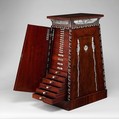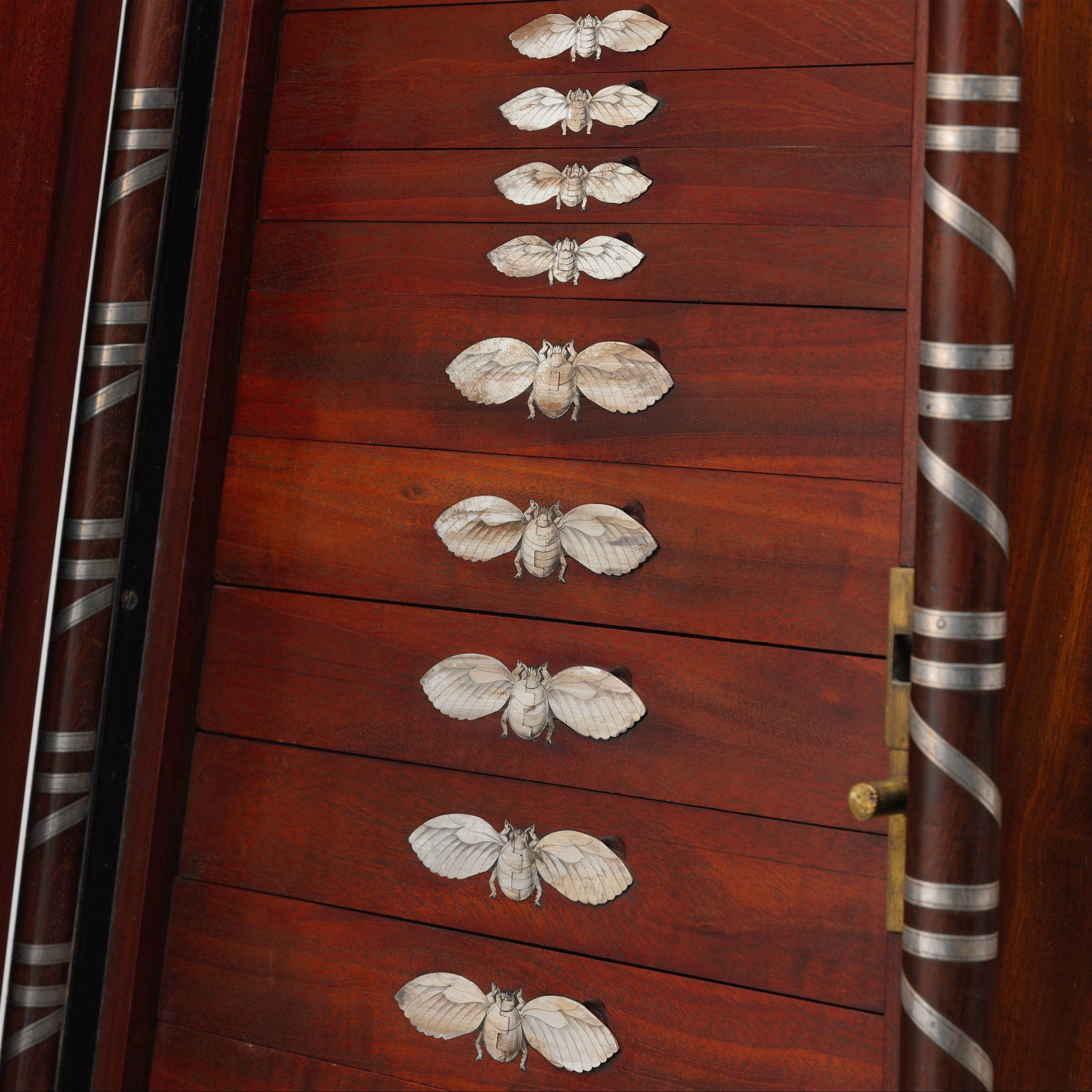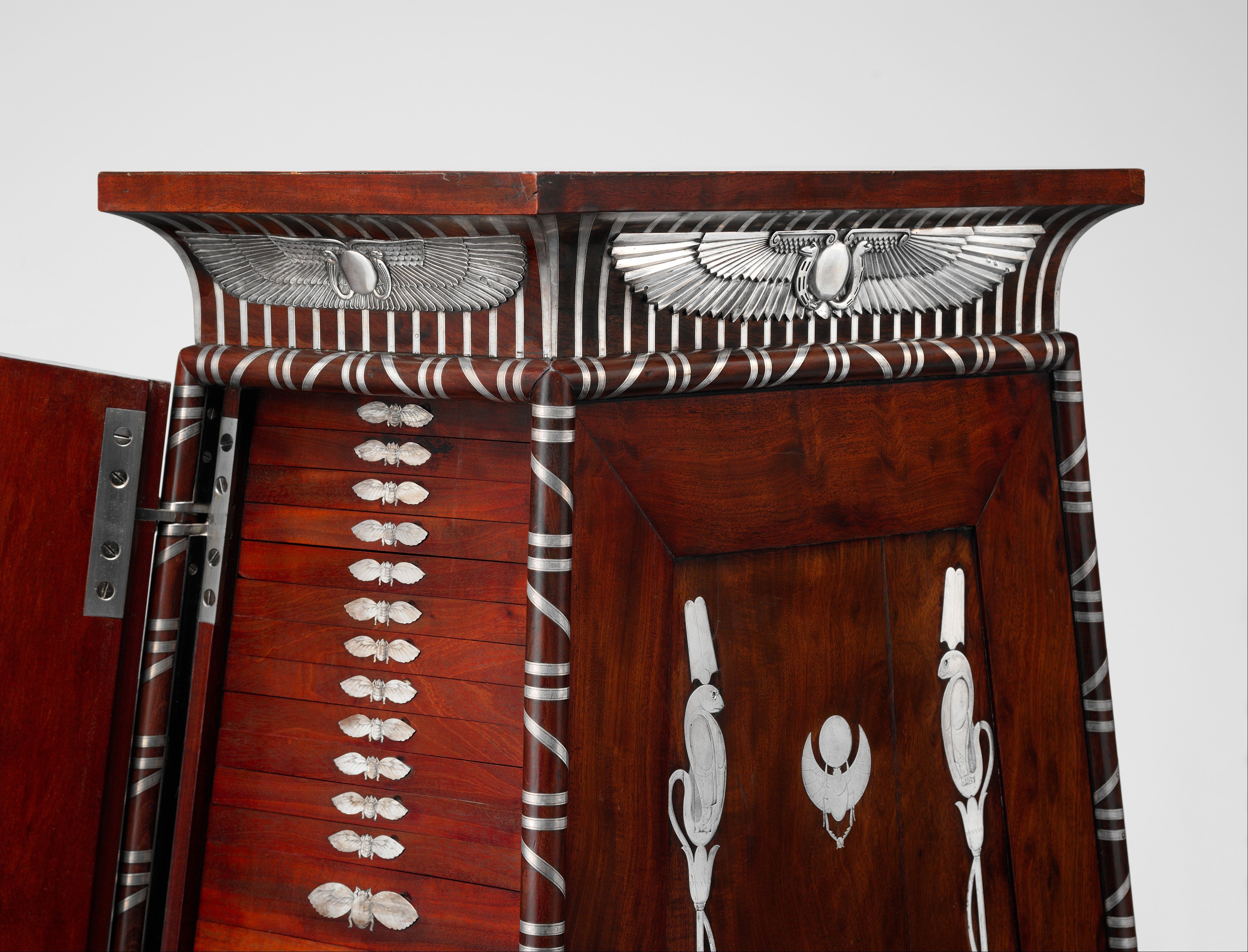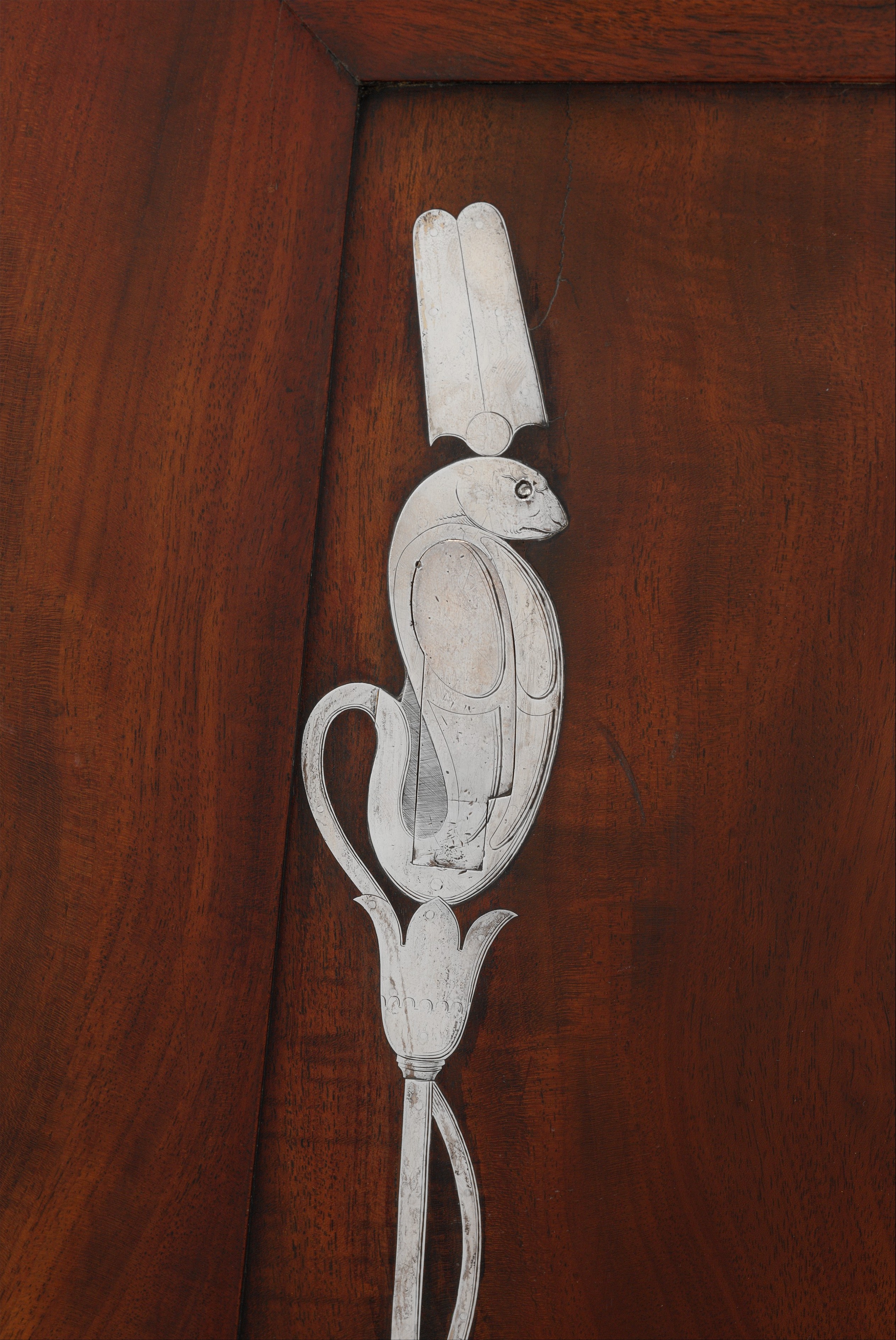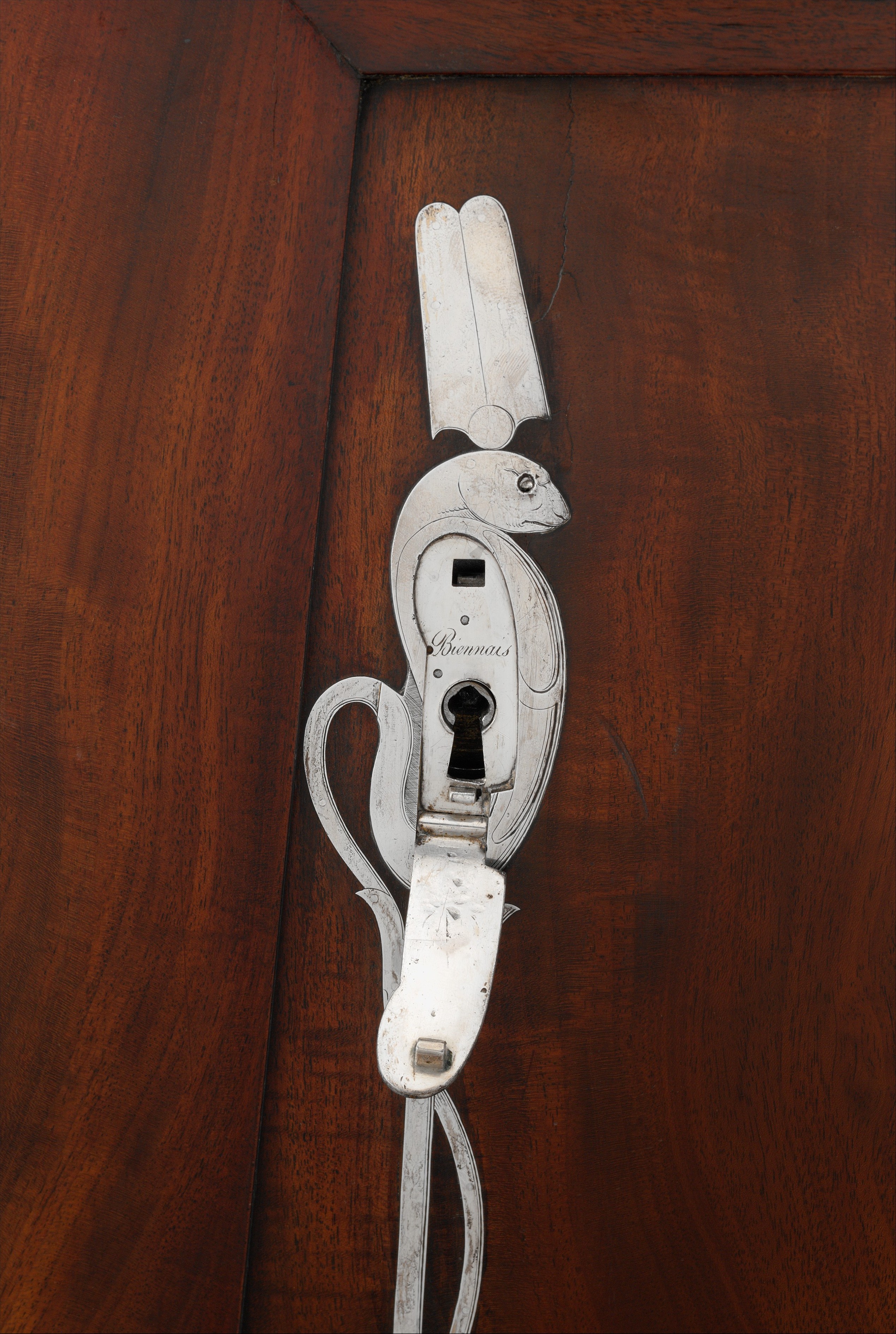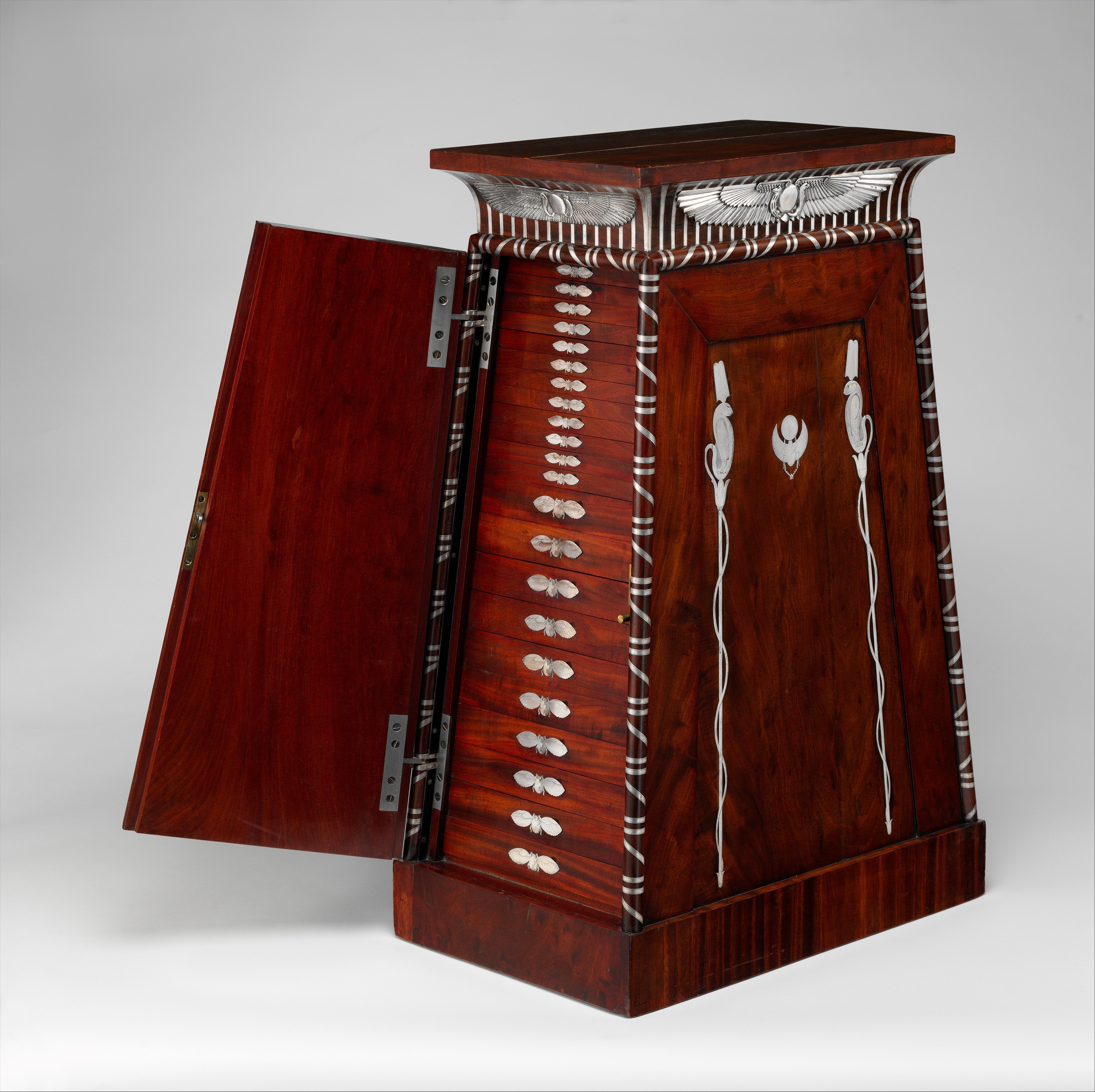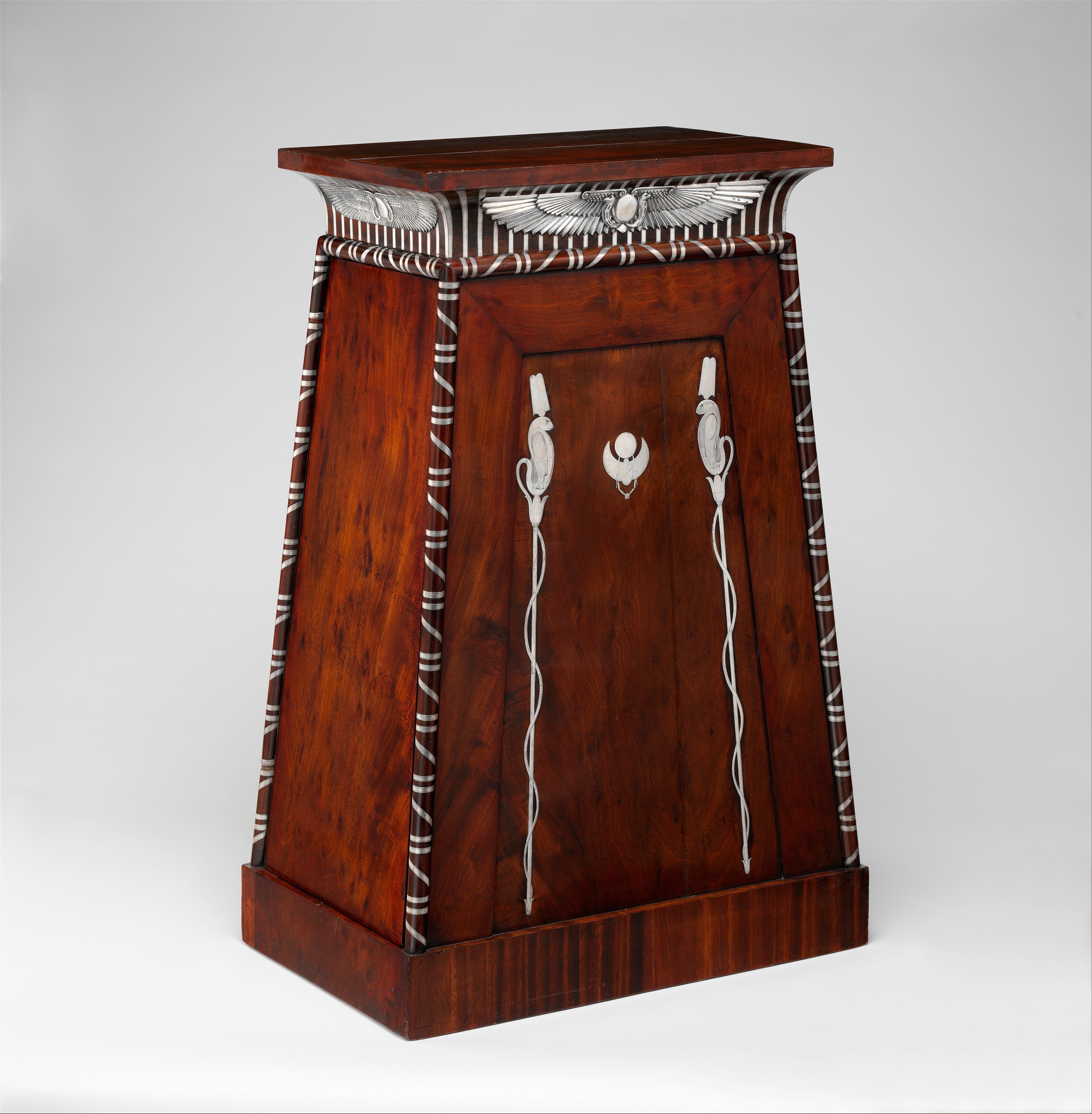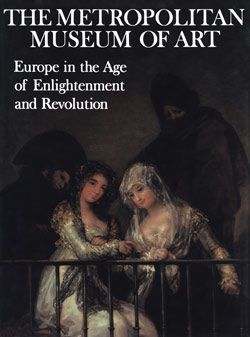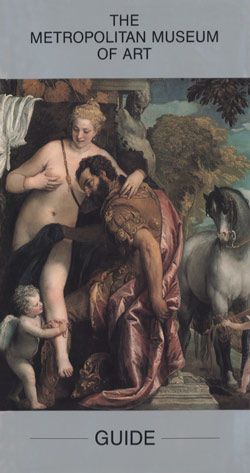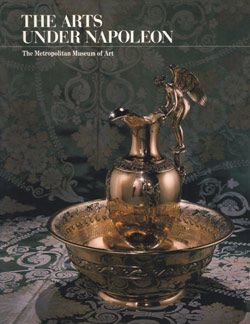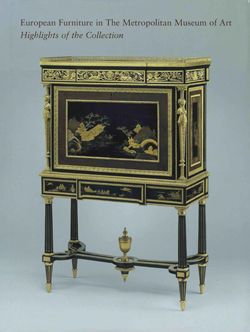Coin cabinet
The design, medium, and execution of this extravagant medal cabinet are as impressive and eccentric as the man who probably commissioned it, Napoleon, Emperor of the French (1769–1821), who at the time of its making was a step away from abdication and exile.[1] The first significant contemporary reference to it has been published by Antony Griffiths: "The most interesting record, however, is an account submitted in February 1814 by [the goldsmith] Biennais for 3600 francs, for what is described as the 'médailler du Roi.'" In Biennais's account, Griffiths continues, this medal cabinet for the king is described as "in the form of an Egyptian pedestal, containing 44 mahogany drawers with silver mounts, and meant to serve as a stand for the emperor's old medal cabinet."[2]
Napoleon was interested in medals. While campaigning in Egypt in the 1790s, he found a medal of the Roman general Julius Caesar, and in 1803 when he was considering an invasion of England, some coins of William the Conqueror were uncovered at Ambleteuse. Both discoveries were considered extremely propitious.[3] He developed the practice of distributing medals on state occasions to commemorate the high points of his career, and he also had special editions struck in precious metals and sent to foreign allies. The first fully documented owner of this cabinet, Napoleon's Director General of Museums, Baron Dominique-Vivant Denon, was no less an enthusiast. When his estate was sold after his death, three thousand contemporary medals alone were listed in the inventory.[4] Denon had accompanied Napoleon on his Egyptian campaign in 1798–99 as a recording draftsman. The book he wrote based on his experiences and observations along the Nile, Voyage dans la Basse et la Haute Égypte (1802), brought ancient Egypt to life for his readers and whipped up to a frenzy the European craze known as Egyptomania. Napoleon later appointed Denon director of the Musée Napoléon (now the Musée du Louvre). He was also for a time in charge of the medals mint (Monnaie des Médailles) and designed the ceremonial necklace of the Legion of Honor, a special badge with a chain, made by the French firm of Biennais, which Napoleon gave to distinguished members of his immediate entourage.[5]
Denon may have instructed the designer Charles Percier regarding the details of this splendid cabinet.[6] The pylon (gateway) at Apollonopolis Parva (now Ghoos) in Upper Egypt, which Denon recorded in his book, served as the inspiration for the top section.[7] The piece was made by the Parisian firm of François-Honoré-Georges Jacob-Desmalter, who in 1807 employed as many as 350 specialist craftsmen. His furniture is characterized by superb quality, classical severity, and functional perfection. Whether or not the cabinet was commissioned by Napoleon, it would have appealed to him. The emperor once compared his own perfectly orderly mind to "a chest of drawers, which he could open or close at will, forgetting any subject when its drawer was closed, and finding it ready with all necessary detail when its drawer was opened."[8]
Like other grand furniture of the Empire period, the cabinet is decorated with applied and inlaid metal, but here the patron demanded something out of the ordinary: the fittings are of the finest silver (having a purity of 950/1,000) rather than the usual gilded bronze. The famous goldsmith's shop of Martin-Guillaume Biennais was selected to make them. Beneath the cornice at the top there are inlaid silver bands surmounted by an Egyptianizing winged disk and two uraei, the sacred cobra symbol of ancient Egyptian kings. Inlaid on the front and the back panel of the cabinet is a winged scarab between uraei astride lotus stalks. The eye of each uraeus is a catch; when a silver stick that accompanies the keys to the cabinet is inserted in the pupil, the body of the snake falls forward to reveal the keyhole that opens one of the two side doors. Then the function of the cabinet is revealed. Each cupboard contains twenty-two drawers of graduated size, formerly fitted to hold medals and coins (the number of each drawer is engraved on an octagonal silver plaque affixed to the top edge). In the center of each drawer front is inlaid a silver scarablike insect, whose right wing is hinged to provide a pull. In addition to his maker's mark on one wing of each winged disk, Biennais had his name engraved above each keyhole so that no one opening the cupboards could miss it.
As Jean-Marcel Humbert has observed, "The originality and variety of its decoration make this piece an excellent illustration of the taste for things Egyptian at the beginning of the nineteenth century. At the same time, it is the very essence of Egyptomania: the adaptation of antique forms and decorations, in dimensions as well as materials, to a type of object and function completely different from those associated with these symbols in Antiquity."[9]
[Wolfram Koeppe 2006]
Footnotes:
1. On the design, medium, and execution of the cabinet, see Dominique-Vivant Denon: L'oeil de Napoléon. Exh. cat., Musée du Louvre. Paris, 1999, p. 425, no. 492 (entry by Anne Dion-Tenenbaum). For the silver marks, see Louis Carré. A Guide to Old French Plate. London, 1931, p. 202 (Paris mark for first-standard silver), p. 203 (Paris medium excise mark); Émile Beuque and Marcel Frapsauce. Dictionnaire des poinçons de maîtres-orfèvres français du XIVe siècle à 1838. Paris, 1929, p. 281, no. 2493; and Henry Nocq. Le poinçon de Paris: Répertoire des maîtres-orfèvres de la jurisdiction de Paris depuis le Moyen-Âge jusqu'à la fin de XVIIIe siècle. 5 vols. Paris, 1926-31, p. 195 (standard marks described, dated 1797). Other recent literature on the cabinet includes the following: Napoléon. Exh. cat., Grand Palais, Paris, 1969, pp. 105-6, no. 289 (entry by Serge Grandjean); The Age of Neo-Classicism. Exh. cat., Royal Academy of Arts and Victoria and Albert Museum. London, 1972, no. 1609 (entry by William Rieder); Pierre Kjellberg. Le mobilier français. Vol. I, Du Moye Âge à Louis XV. Vol. 2, De la transition Louis XV–XVI à 1925. Paris, 1978-80, vol. 2, p. 151, fig. 143; Wolfram Koeppe. "Quo Vadis Möbelliteratur?" Kunst & Antiquitäten, 1993, no. 9, p. 43; Pierre Arizzoli-Clémental. "Néoclassicisme." In L'art décoratif en Europe, ed. Alain Gruber, vol. 3, Du Néoclassicisme à l'Art Déco, pp. 21–127. Paris, 1994, p. 67; and Michael Pantazzi. "Italy and the Grand Tour." In Jean-Marcel Humbert, Michael Pantazzi, and Christine Ziegler. Egyptomania: Egypt in Western Art, 1730–1930. Exh. cat. Musée du Louvre, Paris; National Gallery of Canada, Ottawa; and Kunsthistorisches Museum, Vienna. Ottawa and Paris, 1994, pp. 206-8, no. 107 (entry by Jean-Marcel Humbert).
2. "en forme de piédestal égyptien, contenant 44 tiroirs en bois d'acajou avec ornemens incrustés en argent, et destiné à supporter l'ancien médaillier de l'Émpereur." Antony Griffiths. "The End of Napoleon's Histoire Métallique." Medal, no. 18 (Spring 1991), pp. 47-49, fig. 17.
3. James David Draper, with Clare Le Corbeiller. The Arts under Napoleon: An Exhibition of the Department of European Sculpture and Decorative Arts, with Loans from the Audrey B. Love Foundation and Other New York Collections. Exh. cat., The Metropolitan Museum of Art. New York, 1978, no. 14, fig. 5.
4. L. J. J. Dubois. Description des objets d'arts qui composent le cabinet de feu M. le baron V. Denon: Monuments antiques, historiques, modernes; ouvrages orientaux, etc. Paris, 1826, p. 191, no. 835; and Dominique-Vivant Denon: L'oeil de Napoléon. Exh. cat., Musée du Louvre. Paris, 1999.
5. Anne Dion-Tenenbaum. L'orfèvre de Napoléon: Martin-Guillaume Biennais. Exh. cat., Musée du Louvre. Les dossiers due Musée du Louvre. Paris, 2003, pp. 102-4, no. 67.
6. On Percier as the designer of this cabinet, see Michael Pantazzi. "Italy and the Grand Tour." In Jean-Marcel Humbert, Michael Pantazzi, and Christine Ziegler. Egyptomania: Egypt in Western Art, 1730–1930. Exh. cat. Musée du Louvre, Paris; National Gallery of Canada, Ottawa; and Kunsthistorisches Museum, Vienna. Ottawa and Paris, 1994, pp. 206-8, no. 107 (entry by Jean-Marcel Humbert). For other aspects of his career, see the catalogue entry for acc. no. 26.256.1.
7. Dominique-Vivant Denon. Voyage dans la Basse et la Haute Égypte pendant les campagnes du Géneral Bonaparte. 2 vols. Paris, 1802. New ed.: Ed. Jean-Claude Watin. Paris, 1989–90, vol. 2, pl. LXXX, fig. 1; and Pierre Kjellberg. Le mobilier français. Vol. I, Du Moye Âge à Louis XV. Vol. 2, De la transition Louis XV–XVI à 1925. Paris, 1978–80, vol. 2, p. 151, fig. 143.
8. Robert Roswell Palmer. A History of the Modern World. 2nd ed. Rev. with the collaboration of Joel Colton. New York, 1963, p. 370.
9. Michael Pantazzi. "Italy and the Grand Tour." In Jean-Marcel Humbert, Michael Pantazzi, and Christine Ziegler. Egyptomania: Egypt in Western Art, 1730–1930. Exh. cat. Musée du Louvre, Paris; National Gallery of Canada, Ottawa; and Kunsthistorisches Museum, Vienna. Ottawa and Paris, 1994, pp. 206-8, no. 107 (entry by Jean-Marcel Humbert).
Due to rights restrictions, this image cannot be enlarged, viewed at full screen, or downloaded.
This artwork is meant to be viewed from right to left. Scroll left to view more.
